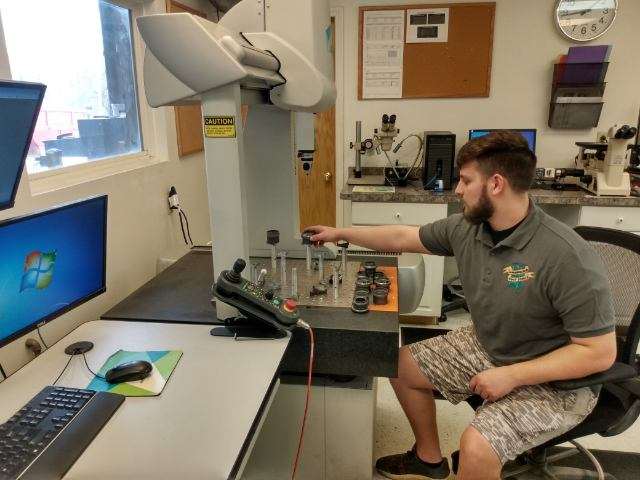Cold Forging Process
The first step that we take at American Cold Forge when evaluating an inquiry is to review the material grade and mechanical strength specifications. In many cases, we have identified opportunities for our customers that allow the use of lower cost grades of material while maintaining the product performance requirements. Such material substitutions are made possible because of the strength enhancing characteristics of the cold forging process. By combining SolidWorks® 3D design software and Deform® simulation software, coupled with our CNC capabilities, American Cold Forge can take customers from “print to product” in the fast lane! Since we already make 95% of our tooling in house, prototypes always present a new and exciting challenge.

Our Tools
Below, are a few of the tools that American Cold Forge utilizes to produce quality cold forgings by the millions.
- SolidWorks® 3D design software
- Deform® simulation software
- Mazak® CNC turning capabilities
- Minster® mechanical power presses from 30 to 1500 ton capacities
- PC TOOLCRIB Lite® tooling inventory software
- Kurt® quality inspection software
- Complete inspection lab for measuring, sectioning, examining and documenting dimensional and mechanical characteristics of any part that we produce.
Our Materials
The list below includes some of the most commonly cold forged metals. In addition to the knowledge accumulated over decades of cold forging experience American Cold Forge has direct access to steel supplier metallurgical development resources to establish advanced processing and material selection recommendations.
- Carbon Steel: 1010, 1018, 1020, 1026, 1035, 1040, 1045
- Alloy Steel: 5120, 8610, 8620
- Stainless Steel: 304
- Aluminum: 6061
- And we can forge nearly all varieties of nonferrous metals as well.
Our Materials
Grain Flow Comparison
